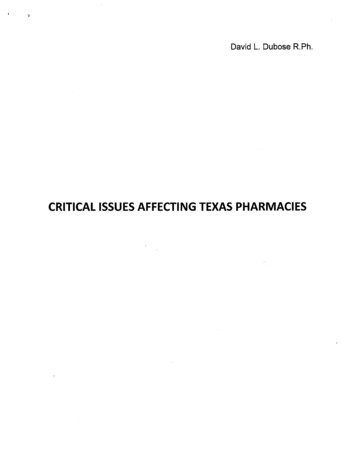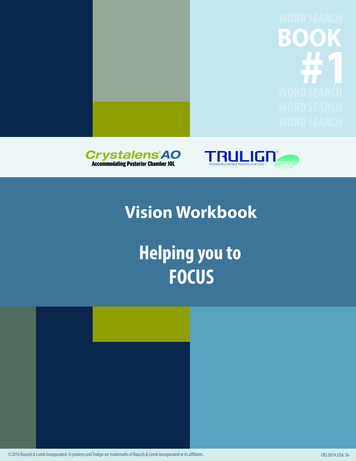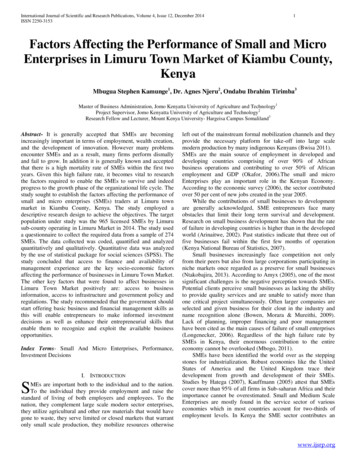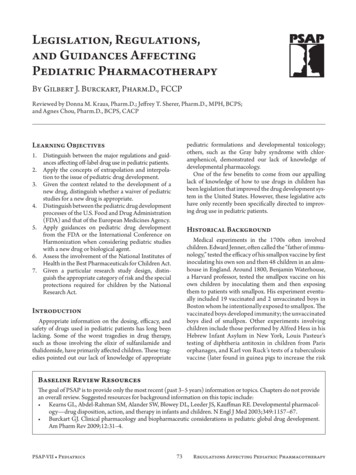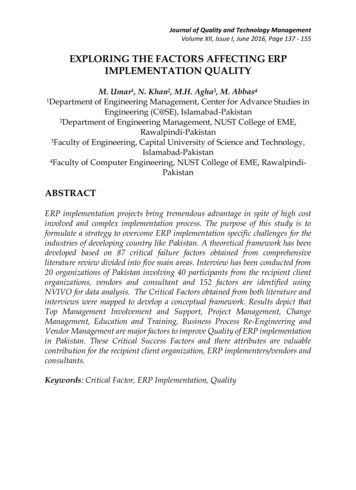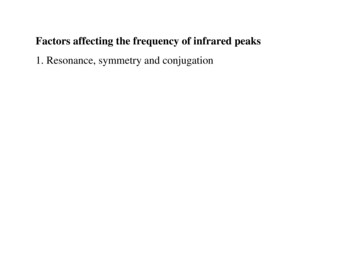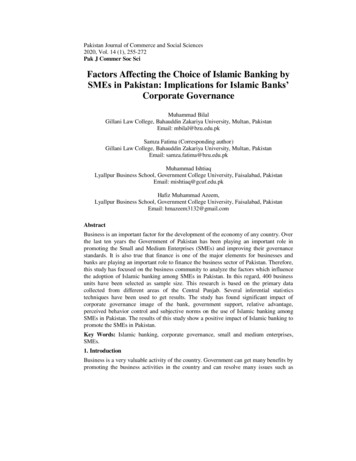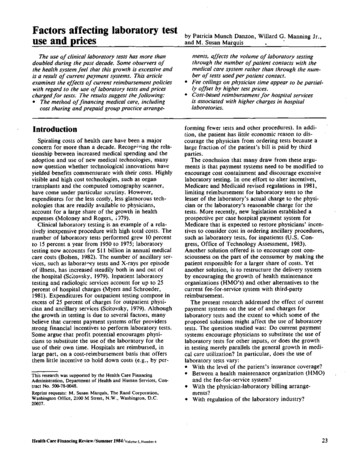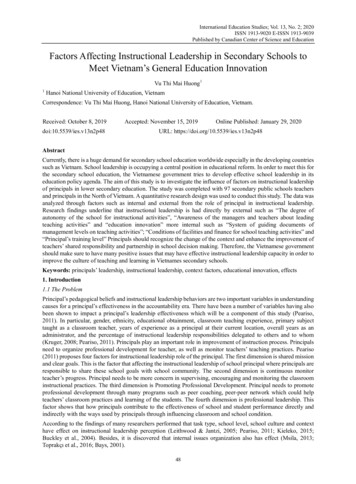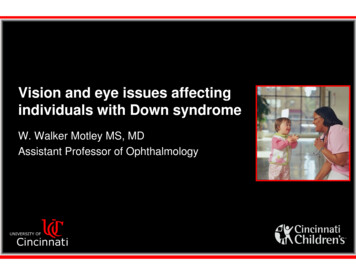
Transcription
Vision and eye issues affectingindividuals with Down syndromeW. Walker Motley MS, MDAssistant Professor of OphthalmologyShortcut to Journal article PDFs.lnk
Q1. At what age and how often do I needto have my child’s eyes examined?Q2. What eye problems do I need to watchout for?Q3. Why do so many people with DS wearglasses?Q4. Why do doctors use dilating drops duringthe eye examination?
Q1. At what age and how often do I needto have my child’s eyes examined?Q2. What eye problems do I need to watchout for?Q3. Why do so many people with DS wearglasses?Q4. Why do doctors use dilating drops duringthe eye examination?
When should we get an eye exam?Birth5yr13yr21yr See pediatric ophthalmologist by 6 months of age. 1 – 5 years of age – every year 5 – 13 years of age – every 2 years 13 – 21 years of age – every 3 yearsPediatrics Aug 2011 pp 392-406
Q1. At what age and how often do I needto have my child’s eyes examined?Q2. What eye problems do I need to watchfor?Q3. Why do so many people with DS wearglasses?Q4. Why do doctors use dilating drops duringthe eye examination?
What do I need to look out for? Eye misalignmentSquintingNystagmusHead tiltingEye drainageEye rubbing
What do I need to look out for? Eye misalignment - StrabismusSquintingNystagmusHead tiltingEye drainageEye rubbing
Pseudostrabismus:“false” or “fake”eye misalignment
What do I need to look out for? Eye misalignmentSquintingNystagmusHead tiltingEye drainageEye rubbing
Eye Misalignment - Strabismus Eye crossing is “Esotropia” Outward turning of an eye is “Exotropia” Vertical misalignment
Accommodative Esotropia
Nonaccommodative EsotropiaPre-opPost-op
Nonaccommodative EsotropiaPre-opPost-op
How successful is surgery? For people without DS, surgery issuccessful in 80-90% of cases. For people with DS, CincinnatiChildren’s case-control study dataindicates similar outcomes.
What do I need to look out for? Eye misalignmentSquintingNystagmusHead tiltingEye drainageEye rubbing
What do I need to look out for? Eye misalignmentSquintingNystagmusHead tiltingEye drainageEye rubbingvideo
Nystagmus Occurs in about 10% of children with DSbut only 1/1000 without DS. Usually improves with age. May be due to significant eye diseasethat needs early treatment. Usually not associated with neurologicaldisorder.
Head tilting or “torticollis” Eye misalignmentSquintingNystagmusHead tilting 30 degreesEye drainageEye rubbing
Head tilt corrected with eye surgeryPre-opPost-op
What do I need to look out for? Eye misalignmentSquintingNystagmusHead tiltingEye drainageEye rubbing
Eye drainage If the eyeball is not red then usually dueto a blocked tear duct or “nasolacrimalduct obstruction.” Usually begins before 3 months of age Worse with colds and ear infections
Blocked tear duct surgery
Blocked tear duct Treatment Massage Topical antibiotics Kill bacteria but do not relieve the blockage Nothing works like “Drāno”. Surgery
Blocked tear duct surgery Tear duct probing and irrigation Less successful in children with DS Balloon dacryoplasty Tear duct stent Dacryocystorhinostomy (DCR)
What do I need to look out for? Eye misalignmentSquintingNystagmusHead tiltingEye drainageEye rubbing
Eye rubbing caused by Blepharitis Dry or oily skin accumulation at the base of the lashes
Eye rubbing caused by Blepharitis May have associated“chalazion” or “hordiolum” Treatment Warm compressesBaby shampoo scrubsTopical or oral antibioticsOther topical medicationsSurgery
Keratoconus may be caused by eye rubbing. 0.5 – 18% of adolescents with DS Cornea becomes thin and coneshaped Associated with eye-rubbing Decreased visual acuity due tosevere astigmatism and cornealopacification Risk of corneal perforation
Keratoconus TreatmentTypical Glasses Soft contacts Rigid contacts CornealTransplantDown Syndrome Glasses CornealTransplantCorneal collagen crosslinking
Keratoconus InterventionCollagen Crosslinking Slows progression of disease Riboflavin and UV light Favorable results in Europeanliterature Not FDA approved
Corneal Collagen CrosslinkingUS Trials Multicenter clinical trial – topical anesthesia only Drs. Erin Stahl and Scott Olitsky (Kansas City) –single center trial using general anesthesia
Q1. At what age and how often do I needto have my child’s eyes examined?Q2. What eye problems do I need to watchout for?Q3. Why do so many people with DS octorsuse dilatingdropsduringthe glasses eye examination?
Because they look cool! Refractive errors Farsightedness Nearsightedness Astigmatism Anisometropia Accommodativeinsufficiency Esotropia
Refractive Errors
Refractive Errors in DS Almost all babies are born farsighted (small eye)but outgrow it as the eye enlarges with age. Birth to 2 years old – Most children with DS havefarsightedness similar to typical children. Failure of emmetropization during childhood.
Refractive ErrorsNormal eye
Refractive ErrorsNormal eyeFarsighted - HyperopiaNearsighted - Myopia
Refractive Errors in DS Teenagers and young adults Most have significant refractive errorPersistent farsightednessAcquired nearsightednessAstigmatism
Refractive Errors - AstigmatismTypical Oblique astigmatismDS
AccommodationNormal eyeNormal accommodationAbnormal accommodation
Accommodative Insufficiency Most children with Down syndrome Detect with dynamic retinoscopy Bifocals may improve accommodation
Tips on Glasses for toddlers and preschoolers Need a good fit! Erin’s World frames (specs4us.com) & others Consistency is key! Set aside timeCan start 5 minutes per day and work upBooks, toys, songs - keep hands busyWear glasses at PT, OT, Speech and pre-school Strap or no strap?
Refractive Surgery in DS If vision is expected to be much betterwith glasses but glasses cannot beworn. Refractive errors Nearsighted Farsighted Astigmatism
Refractive Surgery in DS Laser surgery: LASIK PRK Incisional surgery Clear lens exchange Phakic intraocular lens implant Investigational, little data
Q1. At what age and how often do I needto have my child’s eyes examined?Q2. What eye problems do I need to watchout for?Q3. Why do so many people with DS wearglasses?Q4. Why do doctors use dilating drops duringthe eye examination?
Dilating Drops Necessary to examine for cataract andfocusing power of eye (refraction) Providers Ophthalmologist (M.D.) Pediatric Ophthalmologist (aapos.org) Optometrist (O.D.) Optician
Nothing works like “Dr āno”. Surgery. Blocked tear duct surgery . Drs. Erin Stahl and Scott Olitsky (Kansas City) – . LASIK PRK Incisional surgery Clear lens exchange Phakic intraocular lens implant Investigatio
